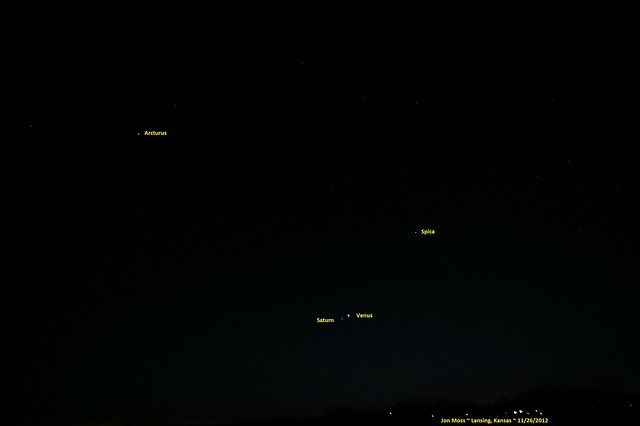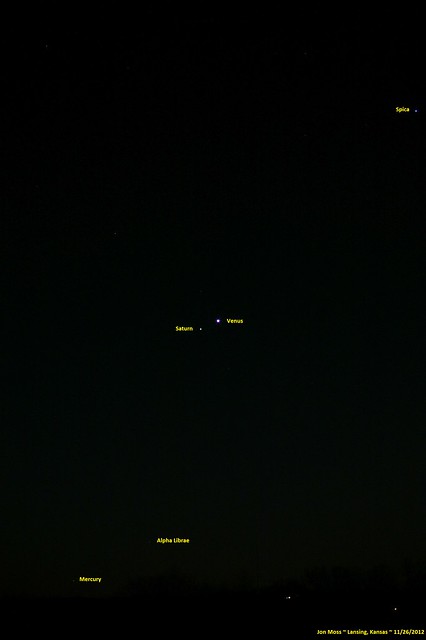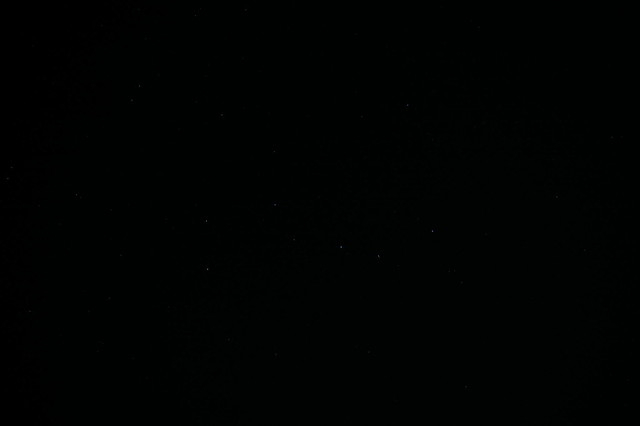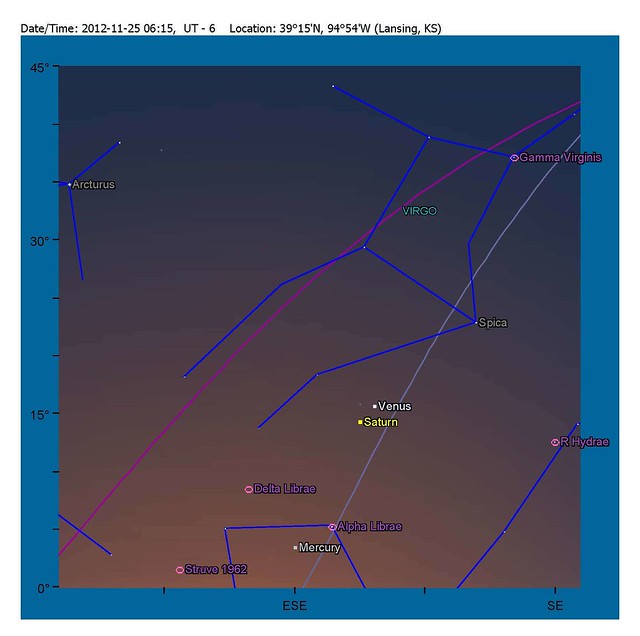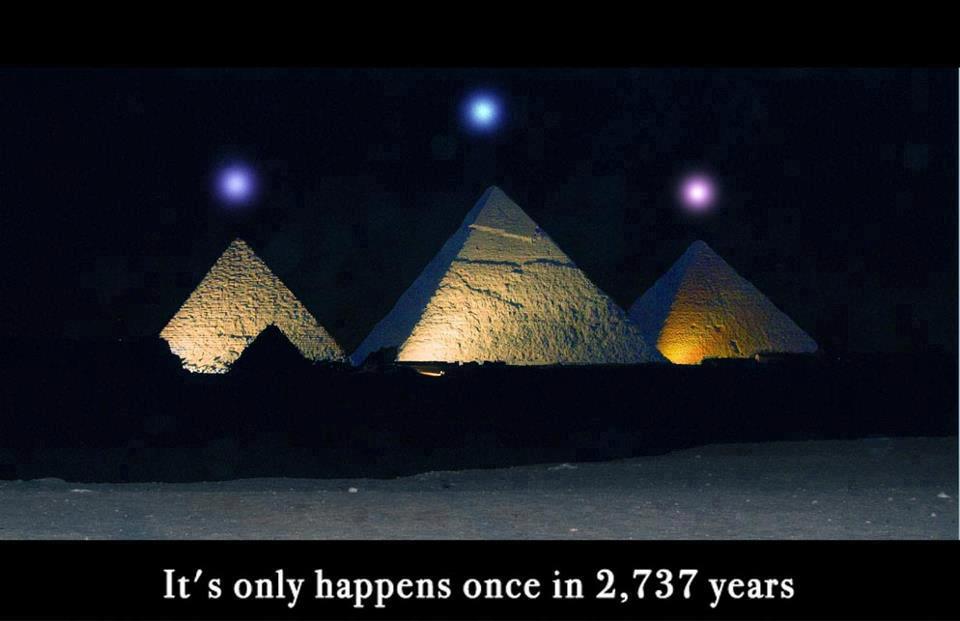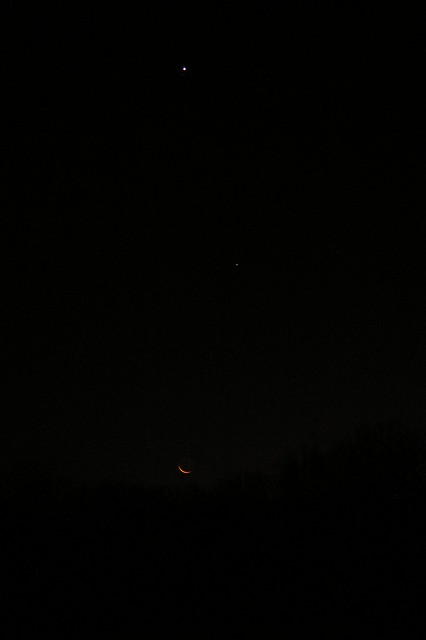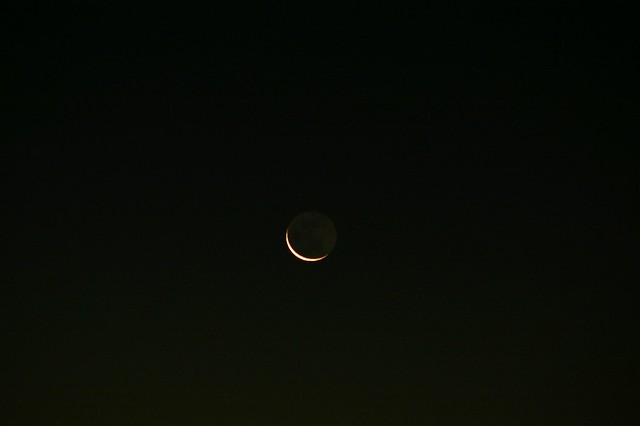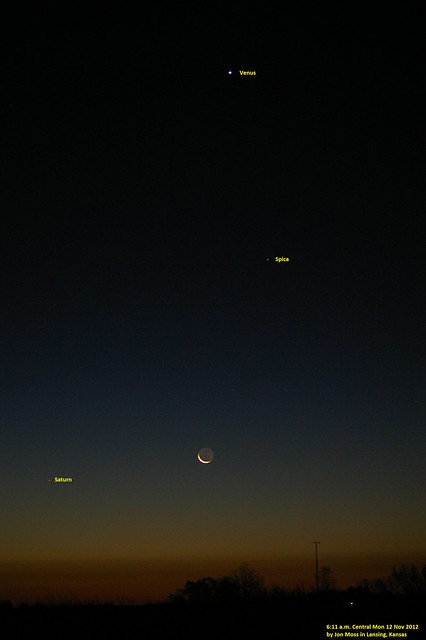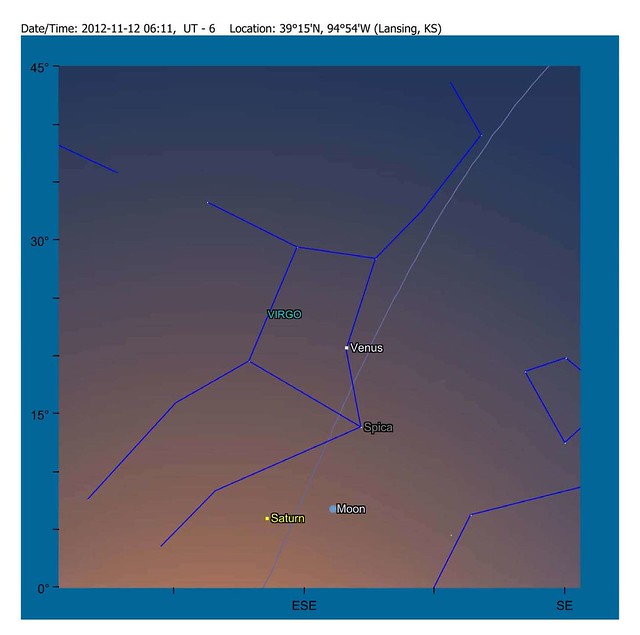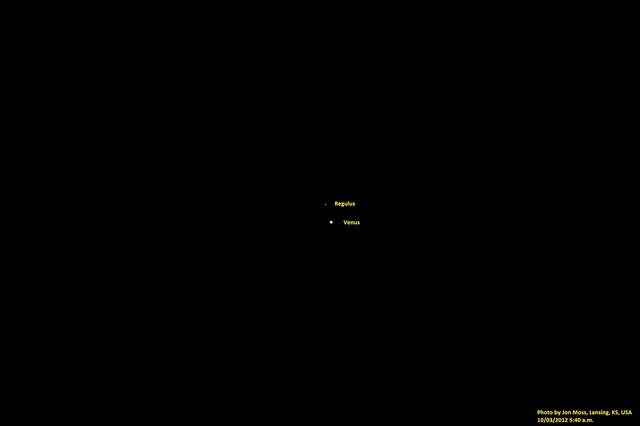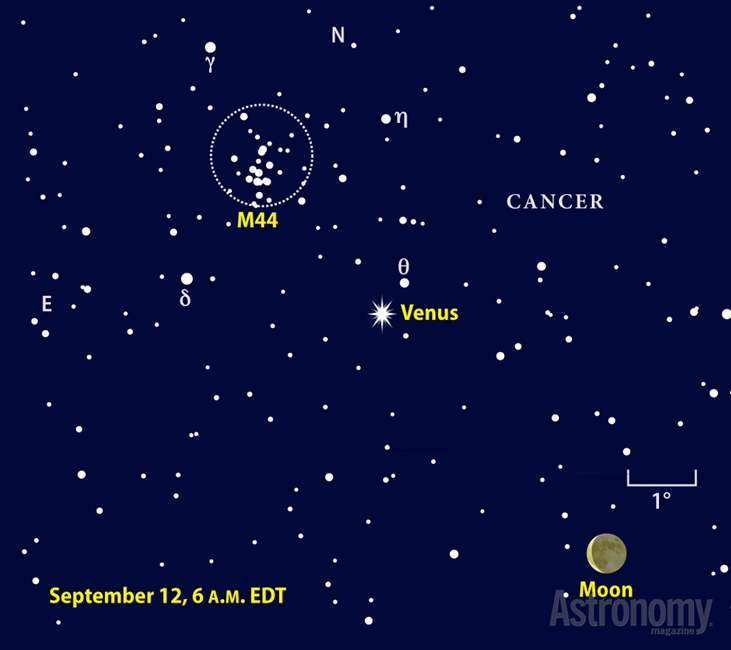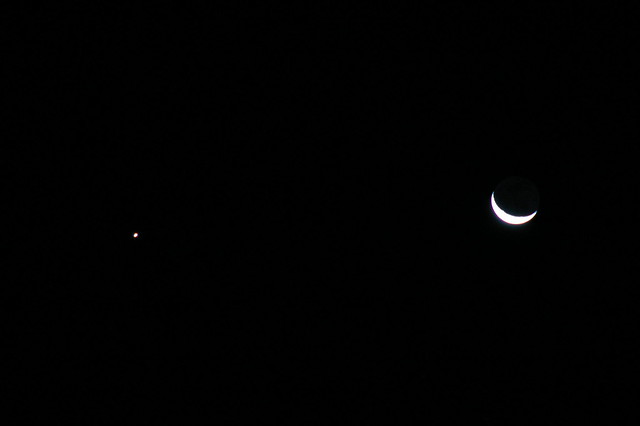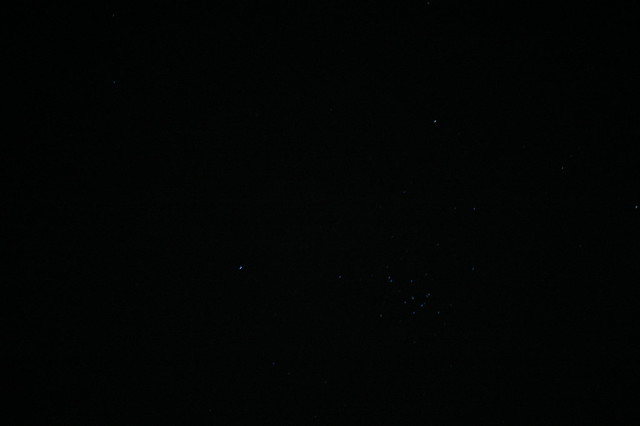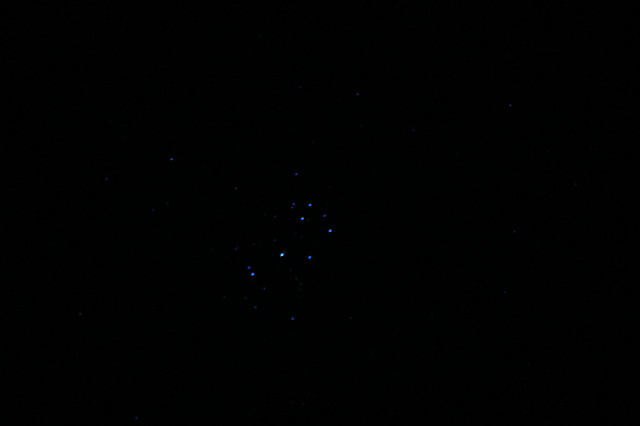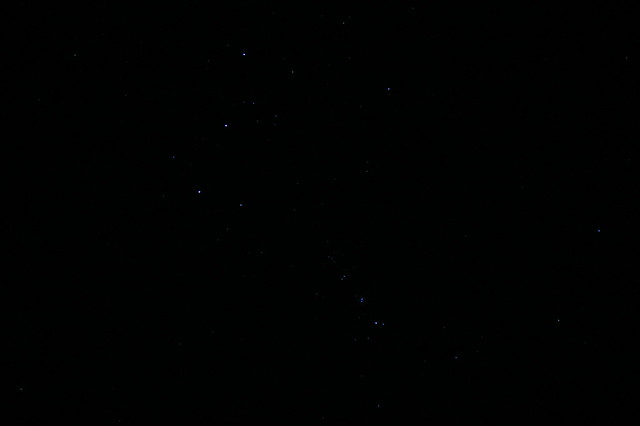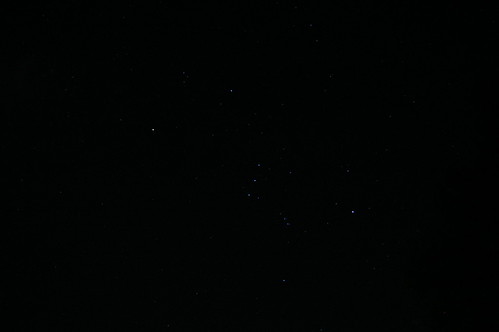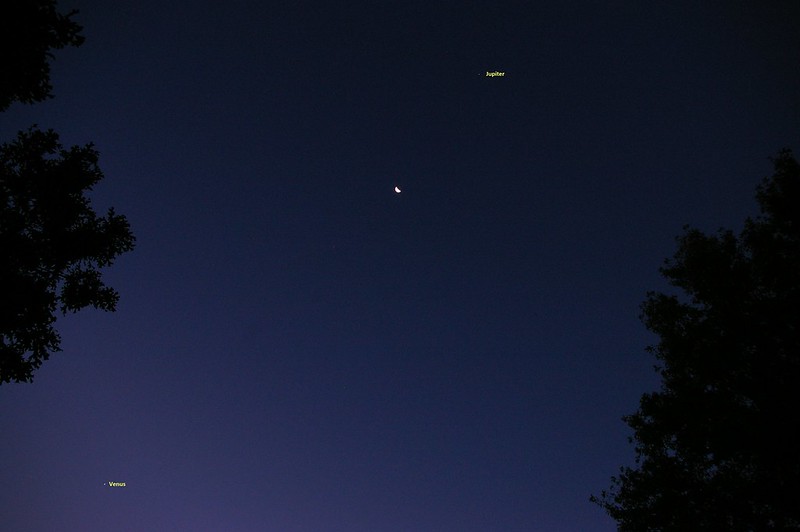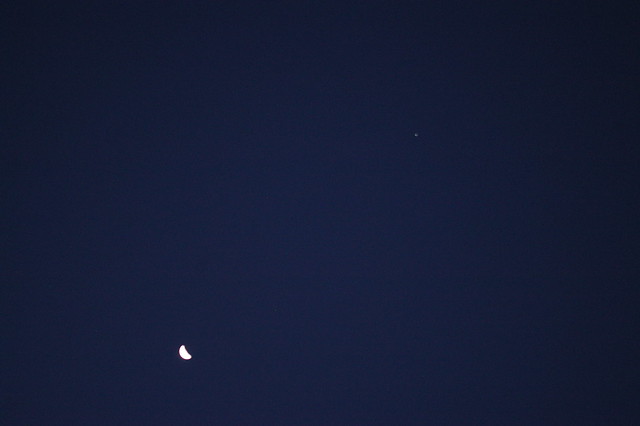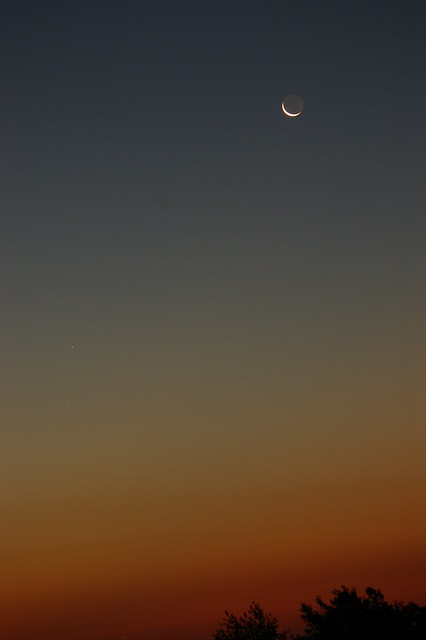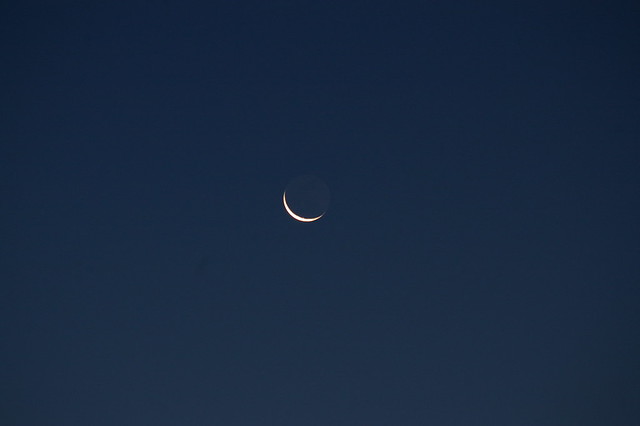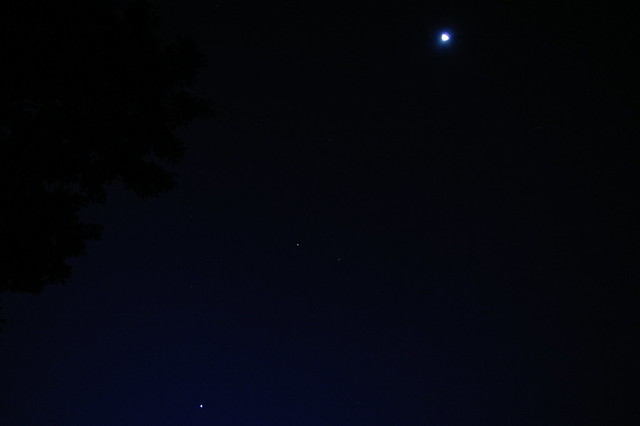I went to bed Sunday night lamenting the end of my longest vacation in over a decade. I double-checked and triple-checked my return-to-work checklist (security badge, laptop, cell phone, sunglasses, lunch bag, work clothes and shoes, etc.) before nodding off. I woke up fifteen minutes before my alarm went off at five o’clock. I jumped out of bed and had myself dressed and ready to go before half past five. I wanted to make sure I didn’t miss this morning’s Saturn-Venus photo opportunity.
I got everything, including the camera and tripod, packed into the back of the van and drove up the hill, squinting through the frosty windshield, to the library parking lot. I left the van running with the defroster on half-blast, but turned off the headlights. I setup the tripod and camera on the sidewalk, but quickly became concerned by the slight breeze from the north, which could (and did) jiggle the camera during the longer exposures necessitated by the pre-dawn darkness.
I changed lenses on the camera back to my normal lens and took a couple of wide angle shots to begin with:
I adjusted the brightness (something I rarely do since I don’t own Photoshop and need to learn how to use Gimp) to make the horizon a bit more visible.
Shortly after six o’clock, I observed Mercury and took a photo in portrait orientation (vertical) to include all three planets and the star Spica:
Because I needed to begin the commute to work at a quarter past six, I had to stop taking photos early. A good thing, too, since my batteries, which I had just put in before yesterday morning’s photo session, had already depleted due to the cold temperatures and long exposure times. I did take the time to switch back to my telephoto lens to zoom in on several of the prime targets.
I managed to snatch a closeup of Venus and Saturn and of Mercury and Alpha Librae before I packed up the equipment and left for work:
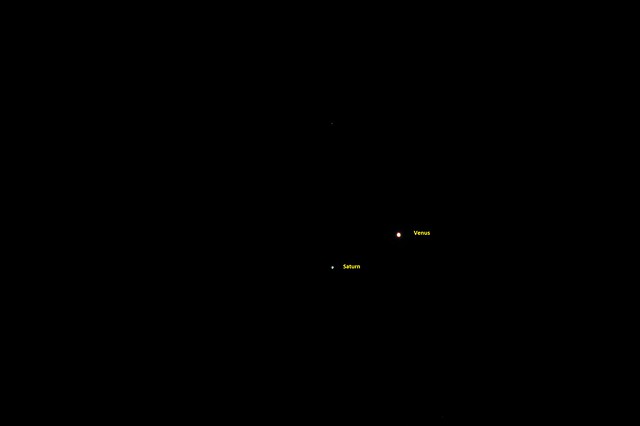
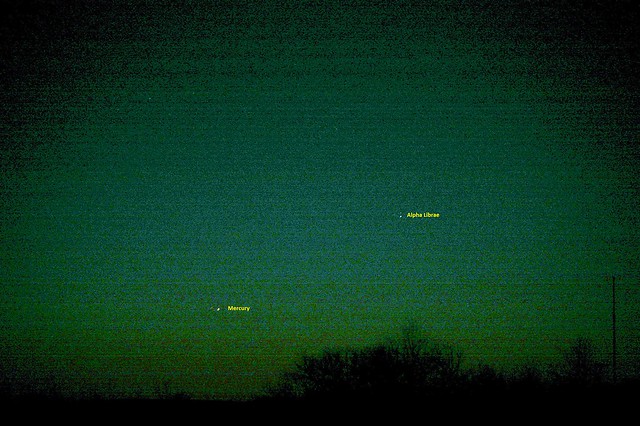
Tomorrow morning, weather permitting clear skies, I will attempt to capture Saturn as it slips past and above Venus.


